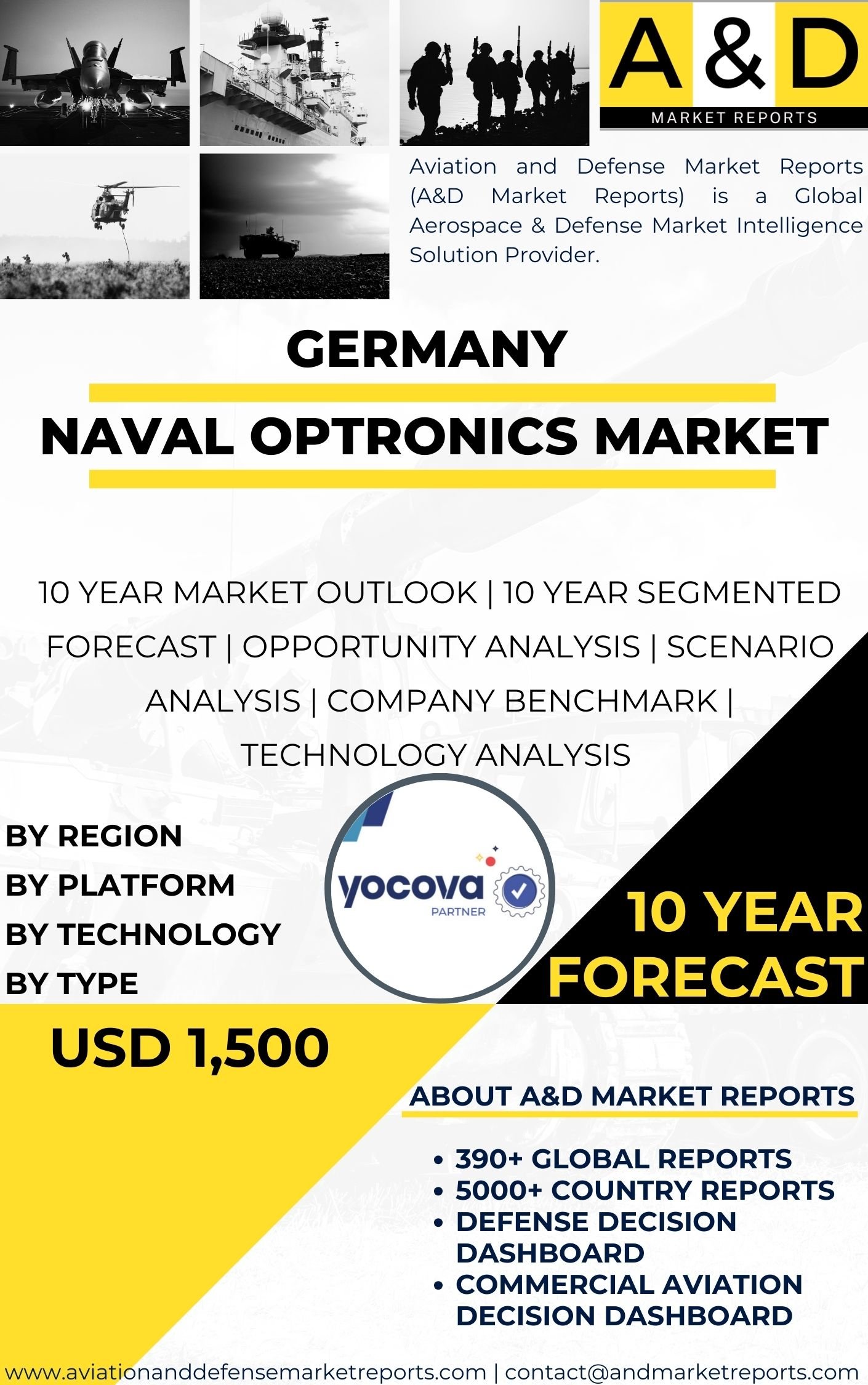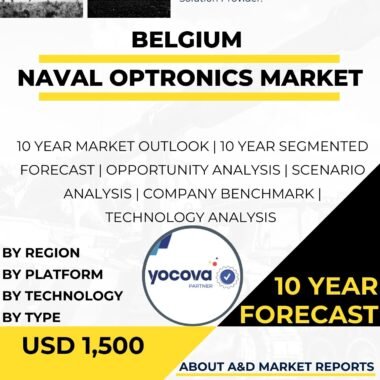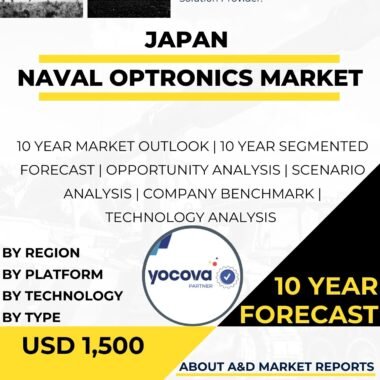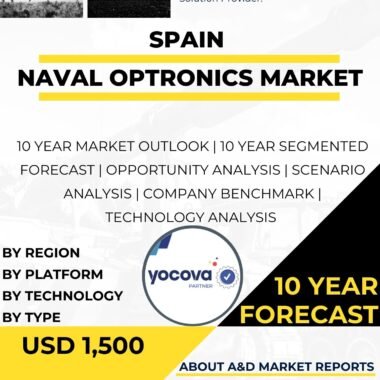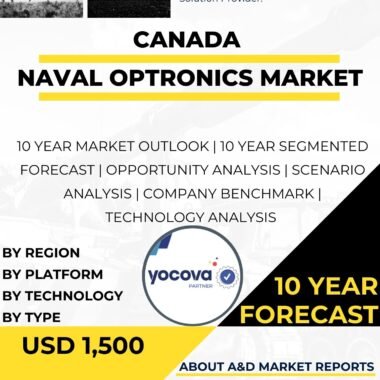Description
Naval Optronics market in Germany is a critical segment of the defense and maritime security sector, driven by the nation?s strategic position in Europe and its commitment to maintaining advanced naval capabilities. This market revolves around the development and deployment of sophisticated optronic systems that combine optical and electronic technologies to provide enhanced situational awareness, surveillance, target acquisition, and threat detection for naval platforms such as surface vessels, submarines, and coastal defense installations. These systems commonly include electro-optical sensors, thermal imagers, infrared cameras, laser rangefinders, and night vision devices, which are essential for real-time data acquisition and visual clarity in diverse maritime conditions. The capability to operate effectively in low-visibility environments and complex littoral zones is particularly valuable as naval operations increasingly focus on stealth, precision, and multi-domain integration.
Germany?s Naval Optronics market benefits from a robust domestic industrial base, supported by strong research and development and government backing. This industrial strength is complemented by Germany?s adherence to NATO standards and European Union defense policies, which emphasize the interoperability of systems and cybersecurity resilience. Regulatory frameworks within the EU, including dual-use technology controls and export licensing policies, impact the strategies of manufacturers and exporters in the German market, ensuring that naval optronics technologies comply with stringent security and ethical standards. These regulations direct the manufacturing processes towards sustainable practices, with a growing emphasis on environmental directives like RoHS and REACH, which limit hazardous substances in electronic components and promote green technologies. This evolving regulatory landscape forces companies to innovate not only technologically but also in terms of materials and production methods, underscoring a market trend towards eco-friendly and operator-safe systems.
The market dynamics in Germany also reflect the broader global maritime security environment, where naval forces face multifaceted challenges ranging from territorial defense and counter-piracy to the safeguarding of commercial shipping lanes against illicit activities. The increasing complexity of threats such as asymmetric warfare and territorial incursions has heightened demand for naval systems that enable persistent maritime surveillance and rapid threat assessment. Naval optronics systems play a pivotal role in providing these capabilities, facilitating effective reconnaissance and precision targeting to prevent and respond to potential threats. Moreover, developments in unmanned underwater vehicles (UUVs) and unmanned surface vehicles (USVs) equipped with advanced electro-optical and infrared sensors are pushing the boundaries of conventional naval reconnaissance, and Germany?s companies are actively participating in integrating these unmanned systems with sophisticated optronics technology.
Germany?s leadership in the Naval Optronics market is supported by key domestic and multinational corporations specializing in high-performance surveillance, targeting, and navigation systems. These firms leverage Germany?s position as a central hub in Europe with excellent infrastructure and export-oriented economy to foster innovation and expand global supply chains. They are investing in cutting-edge technologies such as stabilized panoramic observation systems, multispectral sensing, and the integration of artificial intelligence and machine learning algorithms that enhance the accuracy, speed, and reliability of target identification and tracking. This combination of advanced optronics and AI-driven analytics is transforming naval operations, allowing commanders to make faster and more informed decisions in dynamic maritime scenarios.
The competitive landscape in Germany is characterized by collaboration between established defense contractors and technology startups, which together push the envelope on Industry 4.0 manufacturing techniques and digitalization. This environment facilitates the continuous modernization of naval optronics products, ensuring they remain compatible with evolving naval platforms and emerging defense doctrines. Furthermore, strong government support through funding and innovation programs helps maintain the market?s resilience and competitive edge, enabling German manufacturers to meet both national defense needs and international export demands.
In sum, the Naval Optronics market in Germany is defined by advanced technology integration, regulatory compliance, and strategic innovation aimed at enhancing national and allied maritime security capabilities. The market addresses the growing demand for high-resolution, long-range, and multispectral sensing solutions that are critical in modern naval combat, surveillance, and reconnaissance missions. German companies? focus on sustainability, AI integration, and the development of unmanned maritime systems positions the market for continued growth and technological leadership within Europe and beyond. This forward-looking approach ensures that Germany remains at the forefront of naval optronics, providing robust, reliable, and cutting-edge systems that meet the complex demands of contemporary and future naval warfare environments. All these factors collectively underscore the dynamic and vital nature of the Naval Optronics market in Germany
